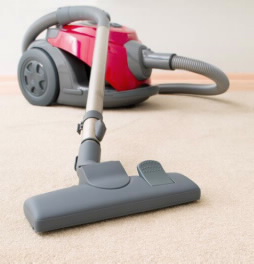FOR IMMEDIATE RELEASE
ACS News Service Weekly PressPac: January 04, 2012
Older, cheaper vacuum cleaners release more bacteria and dust
“Vacuum Cleaner Emissions as a Source of Indoor Exposure to Airborne Particles and Bacteria”
Environmental Science & Technology
Some vacuum cleaners — those basic tools for maintaining a clean indoor environment in homes and offices — actually contribute to indoor air pollution by releasing into the air bacteria and dust that can spread infections and trigger allergies, researchers report in a new study. It appears in ACS’ journal Environmental Science & Technology.
Lidia Morawska and colleagues explain that previous studies showed that vacuum cleaners can increase levels of very small dust particles and bacteria in indoor spaces, where people spend about 90 percent of their time. In an effort to provide more information about emission rates of bacteria and small dust particles, the scientists tested 21 vacuum cleaners sold in Australia. The vacuums came from 11 manufacturers, included those marketed for household and commercial use, ranged in age from six months to 22 years and cost from less than $100 to almost $800. They looked at the effects that age, brand and other factors had on the amount of small particles and bacteria released into air.
All of the vacuums released some fine dust and bacteria into the air. Surprisingly, vacuums with so-called High-Efficiency Particulate Air (HEPA) filters in some cases released only slightly lower levels of dust and bacteria. Newer and more expensive vacuum cleaners were generally less polluting than older or less expensive models.
![]()
Contact
Science Inquiries: Michael Woods, Editor, 202-872-6293
General Inquiries: Michael Bernstein, 202-872-6042


